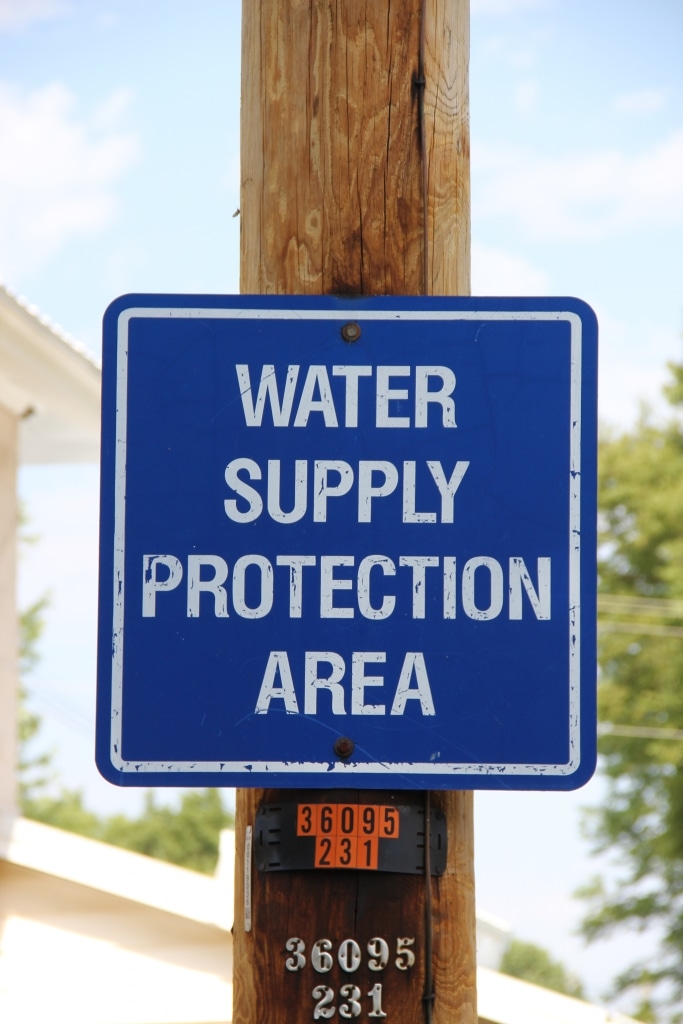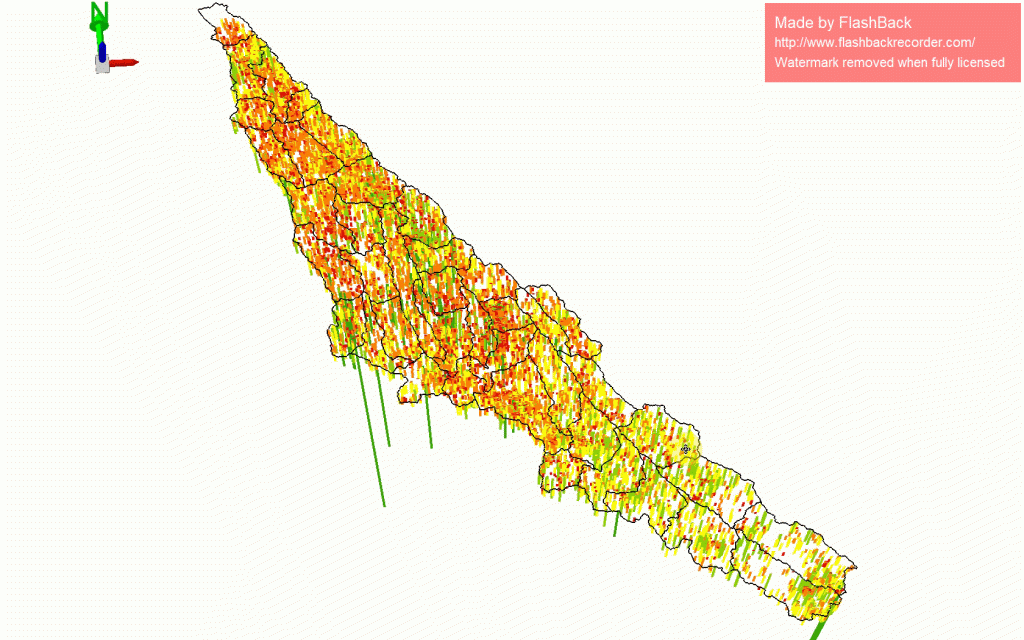What is Source Water?
Source Water is the term that is used to define the source or origin of drinking water. Source water can be derived from surface water, such as a river, stream, lake, or reservoir, or it can be from groundwater. The quality of Source Water can be influenced by many natural and human processes and activities. Historically, Source Water derived from surface water in Iowa has been more susceptible to contamination than Source Water derived from groundwater. However, Source Water derived from surface water sources can also be restored more quickly than Source Water derived from groundwater.
Source Water Protection
Protection of Source Water is vital to human health and an important economic consideration for individuals, municipalities, and businesses. Contamination of Source Water can be a slow process that happens over time or can be caused quickly as the result of an event. Although public wells are tested regularly for contaminants, private well owners in Iowa are not required to test their wells regularly. Source Water Protection is the act of preventing contaminants from entering drinking water sources. The State of Iowa has a Source Water Protection Program focused on municipal drinking water. It has three components 1) Phase I Assessment, 2) Source Water Protection Planning, 3) Implementation. More information about the Iowa Source Water Protection Program can be found here.
Education and information about Source Water issues are important to the health and economic well-being of Iowans. Unfortunately dissemination of Source Water information to the general public is arguably one of the most neglected aspects of Source Water Protection in Iowa. Information about how private and public wells function in relation to their source, how vulnerable Source Water is, information about how to test Source Water and which contaminants to test for, what processes and activities threaten Source Water, what a Source Water Capture Zone is, how to protect Source Water, and other Source Water issues, could save lives and positively impact Iowa’s economy.
Test Results for Private Wells in Iowa and the Upper Wapsipinicon River Watershed
A recent investigation conducted by the Environmental Working Group and the Iowa Environmental Council of Iowa DNR data private well data conducted between 2002 and 2017 found at least one test was positive for bacteria in 41% of wells, or 22,228 wells. It also found that the average concentrations of nitrate increased during the study period and many wells had very high nitrate averages, far above 10 mg/L. More than 1,000 wells had an average nitrate concentration above 30 mg/L, and 499 at or above 50 mg/L, with higher concentrations in more recent years. Because private well owners are not required to test their wells, the true scope of the problem is not yet understood. More information about this study can be found here.
According to 2018 Iowa DNR private well tracking system, there are over 2800 active drinking water private wells in the UWR Watershed that have been tested by Iowa DNR. Several rural locations that serve the public outside of municipal service areas also operate water systems regulated by the DNR. The average depth of private wells in the UWR Watershed is 134 feet. The high percentage of shallow wells (53% less than 100ft) in the UWR Watershed magnifies the importance of surface and ground water quality. An interactive map is available through the Iowa Geologic Survey GeoSam system.
Click on the image to view animation.
Although the Environmental Working Group investigation found that the wells in the Upper Wapsipinicon River Watershed counties did not have the highest nitrate or bacteria tests in Iowa, the concentration of private wells contaminated by Bacteria was higher than most other areas of the state. (See map below, Iowa’s Private Wells Contaminated by Nitrate and Bacteria.) The increased concentrations of nitrate and bacteria in surface and groundwater in the UWR Watershed has made source water quality a high priority for the UWR WMA, due to health concerns and the cost of contaminate removal. Additional information about specific community source water can be found here.
Additional information about source water protection in Iowa can be found here https://www.iowadnr.gov/Environmental-Protection/Water-Quality/Source-Water-Protection
County Sanitarians
County Sanitarians help landowners test wells in each county. State Revolving Loan Funds from Iowa are also available to landowners who want to replace septic systems. The County Sanitarians track the percentage of wells that test poorly in total coliform, E coli, or nitrate. All the sanitarians/Environmental Health offices also issue permits for on-site wastewater treatment/septic systems and conduct time-of-transfer inspections when properties transfer ownership. In 2009, the time-of-transfer law went into effect to help eliminate illegal discharges from private residences.
Information about how to test your well, how to access cost share funding for plugging an abandoned well, or just to find out more information about the related services contact your local County Sanitarian/Environmental Health office.
Health Implications
Additional information about the health implications of nitrate consumption as associated with birth defects, cancers, thyroid problems and other health concerns can be found in an article from the Iowa Environmental Council, which notes, “Iowans are particularly vulnerable to health impacts from nitrate pollution because concentrations of nitrate in Iowa’s streams and groundwater has been found to rank among the highest in the U.S., even higher than elsewhere in the Corn Belt and Northern Great Plains”. The IEC article calls attention to a 2016 Iowa Women’s Health Study (1986-2010) in which researchers “found a higher prevalence of bladder cancer among those (women) exposed to water with greater than 5 mg/L of nitrate-N for four or more years, compared to women with no comparable exposure”. It also calls attention to a 2010 study by the National Cancer Institute that correlates increased risk of thyroid cancer to consumption of public water supplies exceeding 5 mg/L nitrate-N over a long duration.
